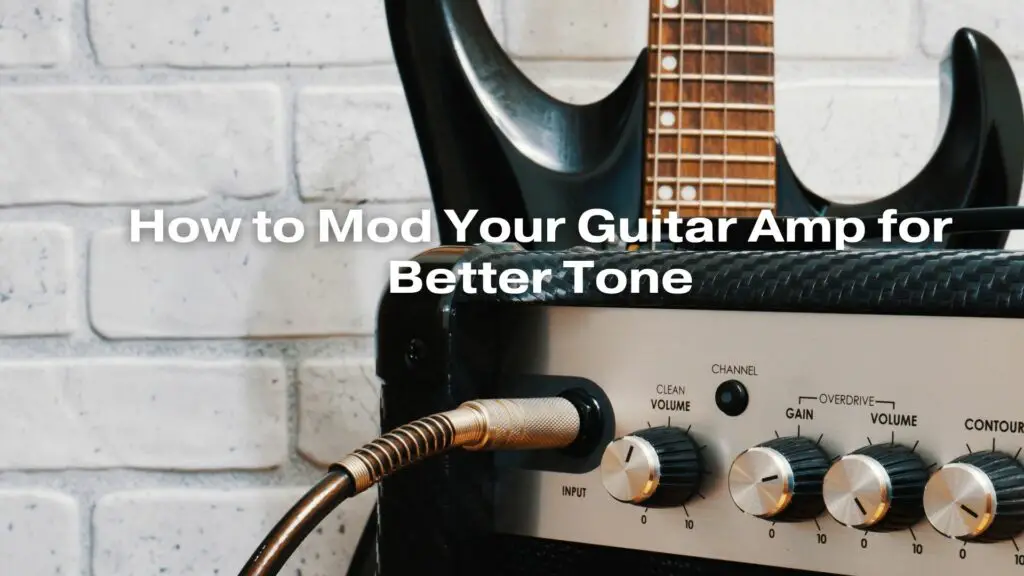Guitar amplifiers are the heart of your tone, and many players seek ways to modify them to achieve the perfect sound. Guitar amp modifications, or “amp mods,” are a popular way to customize your amplifier’s tone and features. Whether you’re a seasoned amp technician or a novice looking to experiment, this guide will provide insights into how to mod your guitar amp for better tone.
1. Know Your Amp
Before you start any modifications, it’s crucial to understand the basics of your amplifier. Study the schematic diagram and the layout of the components. Identify the type of amp (tube or solid-state) and the specific model, as different amps have unique features and modding potential.
2. Safety First
Working on amplifiers involves high voltage, which can be dangerous if mishandled. Always unplug the amp from the power source and discharge any stored electricity before touching any components. If you’re not experienced with electronics, consider having a professional technician perform the mods or guide you through the process.
3. Start with Simple Mods
If you’re new to amp modding, begin with straightforward and reversible modifications. Here are some simple mods to consider:
- Tube Replacement: Swapping out tubes (especially preamp and power tubes) can significantly impact your amp’s tone. Different tube types can add warmth, clarity, or saturation to your sound.
- Speaker Replacement: Changing the speaker can have a substantial effect on your tone. You can opt for a speaker with a different voicing to match your playing style.
- Tone Stack Adjustment: Tweaking the values of capacitors and resistors in the tone stack can shape your amp’s tonal response.
- Bypassing the Tone Circuit: Bypassing the tone control circuit can give your amp a pure and unaltered signal path.
4. Experiment with Capacitor and Resistor Changes
Capacitors and resistors in your amplifier’s circuit are responsible for shaping the tone. Changing these components can yield noticeable results. For example:
- Capacitors: Upgrading coupling capacitors can improve low-end response and overall clarity. Adjusting the values of the tone capacitors can affect the frequency range of your amp’s EQ.
- Resistors: Swapping out resistors can alter the gain and tone of various amplifier stages.
5. Consider Preamp Tube Rolling
Changing the preamp tubes (12AX7, 12AT7, etc.) can have a substantial impact on your amp’s gain, headroom, and overall tonal characteristics. Experiment with different tube brands and models to discover the sound that suits your preferences.
6. Play with Biasing
Biasing refers to setting the correct operating point for the power tubes. Adjusting the bias can impact the amp’s overdrive characteristics and overall feel. It’s essential to measure and set the bias correctly to ensure safe operation and optimal performance. Seek professional guidance if you’re not experienced in biasing.
7. Modify the Reverb and Tremolo Circuits
If your amp features reverb or tremolo effects, consider modifications to improve these features. Upgrading reverb tanks or altering tremolo circuits can yield enhanced depth and character in your amp’s effects.
8. Add an Effects Loop
Adding an effects loop to your amp can provide greater versatility, allowing you to insert time-based effects (like reverb and delay) after the preamp stage for a cleaner and more controllable signal path.
9. Document Your Mods
As you proceed with amp modifications, document each change you make. This includes the components you replace, their values, and any specific changes to the circuit. This documentation will help you troubleshoot and reverse mods if necessary.
10. Listen and Fine-Tune
After making modifications, take the time to listen to the changes in your amp’s tone and response. Make notes and fine-tune the settings to achieve the desired sound. Amp modding is an ongoing process, and your preferences may evolve over time.
In conclusion, modding your guitar amp for better tone can be a rewarding and educational experience. However, it’s essential to approach the process with caution, especially if you’re not experienced in electronics. Start with simple and reversible modifications, and consider seeking professional guidance or advice from amp technicians when needed. With careful consideration and experimentation, you can unlock new tonal possibilities and tailor your amplifier to your unique playing style and sonic preferences.

